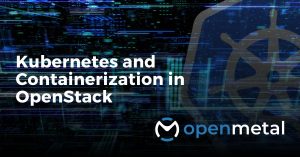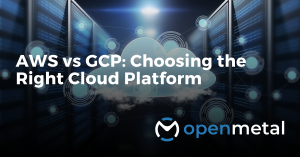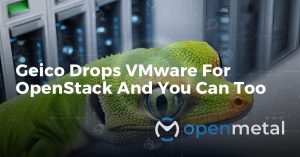Overview
GEICO, ranked #3 in the Top 10 Largest Auto Insurance Companies in 2024, transitions from VMware to OpenStack for its cloud infrastructure. Anyone who has performed migrations from VMware to OpenStack can attest that this was very complicated process that required significant dedication and effort from GEICO.
This bold move carries heavy implications on the shifting tides of enterprise IT strategies. GEICO isn’t the first major corporation to put their trust in OpenStack. In fact, they’re joining a long list of enterprises that use OpenStack such as Walmart, Target, OverStock, and Progressive.
In this blog, we’ll dive into the reasons behind GEICO’s migration, weigh the pros and cons of switching to OpenStack, and offer a step-by-step guide for those considering making a bold move from VMware to OpenStack themselves.
Why is GEICO changing infrastructure solution?
A core reason for the move towards OpenStack is due to the flexibility it offers users when compared to VMware’s proprietary nature. VMware, build on closed source software, limits user’s access to the underlying code. This can hinder the user’s ability to customize their infrastructure or integrate it with additional open source tools.
In contrast, OpenStack’s open source provides users with root-level access to tailor their infrastructure to fit their specific needs. This control over their infrastructure was one of the motivating factors Tad Van Fleet mentioned while discussing motivations for GEICO’s move. With OpenStack, GEICO, like so many others before them, gained greater control over their infrastructure.
What is OpenStack?
OpenStack is a collection of open source software projects for creating and managing cloud infrastructure. OpenStack was designed to provide flexibility and scalability when deploying and managing cloud resources. This makes OpenStack suitable for a variety of use cases from small private clouds to large-scale public cloud environments.
Additionally, because the code for OpenStack projects is open source, users are able to make root level configurations to secure, optimize, customize, and integrate their cloud. OpenStack is one of the most popular open source cloud computing softwares. There’s a huge open source community contributing to the growth of OpenStack, and this has led to the rapid development of many features.
It’s important to note that these perks do come hand in hand with added complexity. OpenStack is not a prepackaged or preconfigured software solution, you need to add the projects that you need and configure them to communicate with each other to serve the purpose you intend to use it for. This is actually one of the reasons why some may wonder why GEICO is taking this route? It seems like they are trading one problem (lack of control over their infrastructure) for another (complex and seemingly impossible to build and maintain infrastructure).
Is OpenStack worth the complexity?
The obvious answer is yes. There’s a reason why major corporations from various industries choose to use OpenStack for their infrastructure. The benefits of having root-level control over your infrastructure and the cost efficiency of an open source private infrastructure far outweighs the cons of having to manage your own cloud. Accord to Van Fleet, GEICO’s migration started with “right-sizing our environment to eliminate over-provisioned resources. This allowed us to reduce the number of physical servers and streamline our infrastructure.”
When Should You Choose OpenStack Over VMware
There are several key needs where OpenStack surpasses VMware. If these scenarios describe your use case, then OpenStack may be a better solution for your needs.
- Scalability: If your workloads will need to scale across multiple machines, OpenStack horizontal scaling architecture allows it to easily scale across multiple machines. VMware, on the contrary, is better suited for single machine virtualization.
- Remote Access: VMware workstation does allow for remote access but it’s usually not through a web interface. This is why you need to use a device with VMware workstation on it. OpenStack however, uses a web-based dashboard, allowing users to have remote access from any device with an internet connection.
Ultimately the choice between OpenStack and VMware will depend on your specific needs. VMware Workstation excels in user-friendliness and caters to single-machine deployments, but it has limitations for cloud-based environments. And OpenStack has strengths in scalability, remote access, and distributed infrastructure that make it stand out in cloud VM management.
Why Aren’t More Companies on OpenStack?
Firstly, it’s important to note that there are a lot of companies running workloads on OpenStack, but they’re not all managing their own OpenStack. There are many OpenStack cloud providers who manage the hardware and OpenStack software for their customers. While there are so many attractive options available to OpenStack users, there are still a number of common concerns and drawbacks that cause users’ hesitation to adoption:
- Support: Not being owned or directed by any one vendor or team can make it difficult to obtain support for the technology, beyond the open source community.
- Consistency: The OpenStack platform tends to always be changing as new components and services are added and others are deprecated, making it difficult to stay up-to-date on release series.
- Complexity: Because of its size and scope, OpenStack is not always the easiest platform to deploy and make work the way one may want. In some cases, an organization might require additional staff or a consulting firm to deploy OpenStack, which can add time and cost.
How Hosted OpenStack Clouds Can Give You The Best Of Both Worlds
Until now, organizations seeking to benefit from the cost advantages of OpenStack had to confront these obstacles. The largest hurdle to overcome always seems to be the design and deployment of those first cloud environments. In fact, it was not unheard of for private clouds on OpenStack to take weeks or months to build and deploy successfully. It was worth the investment in the end. But the time to do so was a heavy burden. That has now changed with OpenMetal Hosted Private Clouds.
OpenMetal Hosted Private Clouds include a hyper-converged set of 3 servers of chosen hardware, powered by OpenStack and Ceph. It delivers everything from VM to block storage, as well as ultra-modern services like Kubernetes and Secrets-as-a-Service.
This new “alternative” cloud platform blurs the line between private and public clouds. It provides the security and cost-effectiveness of a private cloud at the speed and ease of a public cloud. This enables users to rapidly spin private cloud instances up and down for testing and production, just like public clouds.
Learn More About Hosted Private Clouds Powered by OpenStack
More From OpenMetal…

Kubernetes and Containerization in OpenStack
When considering OpenStack and Kubernetes, it is important to note that they do not compete with each other, rather, they are complementary projects. OpenStack is an infrastructure software, its priority is to manage your infrastructure resources …. Read More

Explore alternatives to OpenStack – Apache CloudStack, VMware vCloud, Proxmox, Google Cloud Platform and Amazon Web Services. OpenStack is an open source platform composed of several independent components. These components interoperate with each other through Application Programming Interface (API)…. Read More

AWS vs GCP: Choosing The Right Cloud Platform
AWS and GCP are leading players in cloud computing, offering a wide range of services and attractive pricing. However, choosing the right platform requires understanding their strengths, customer pain points, and alternatives. Comparing and shopping around for cloud products can be complex … Read More
Test Drive
For eligible organizations, individuals, and Open Source Partners, Private Cloud Cores are free to trial. Apply today to qualify.
Subscribe
Join our community! Subscribe to our newsletter to get the latest company news, product releases, updates from partners, and more.



































